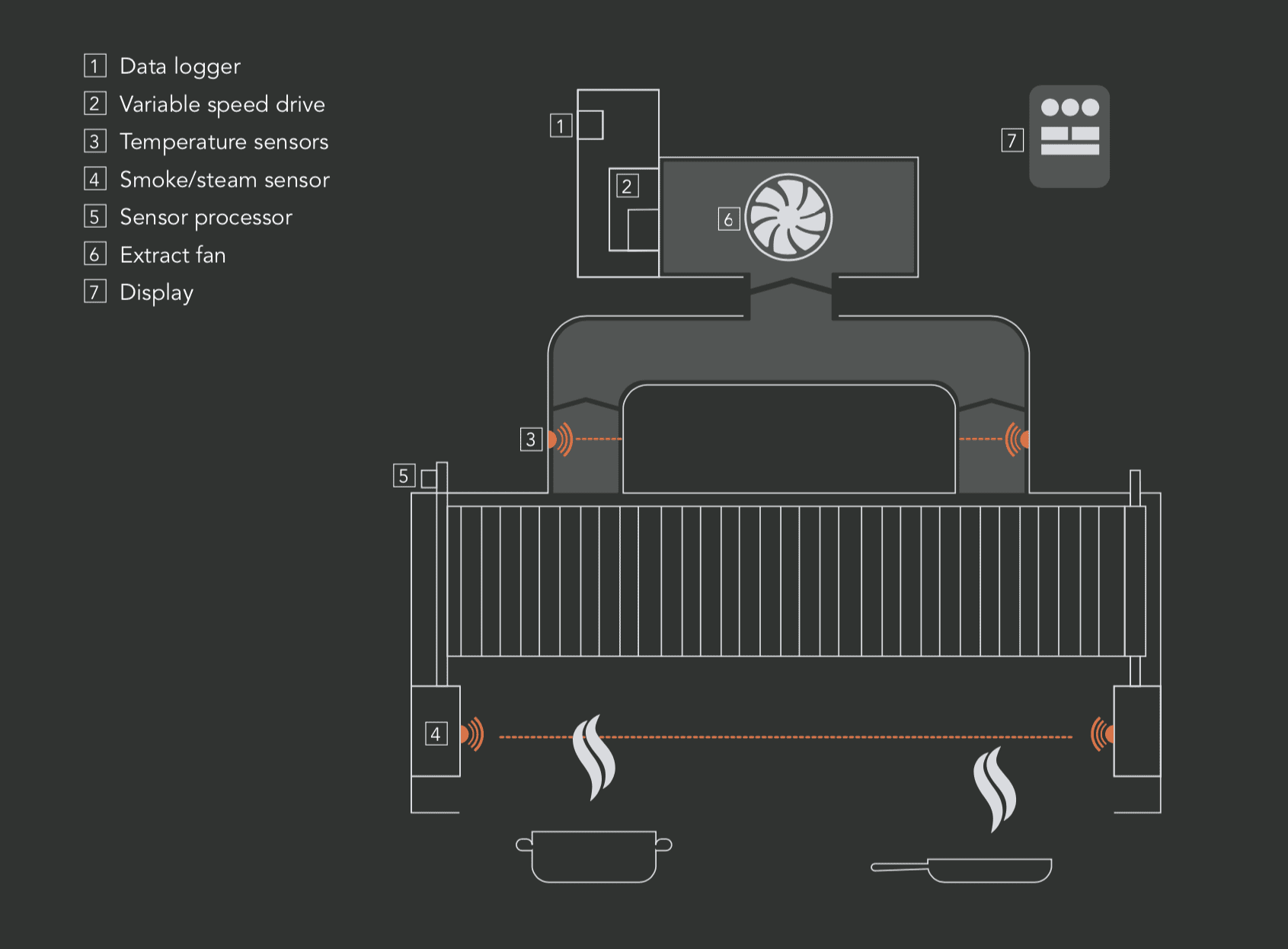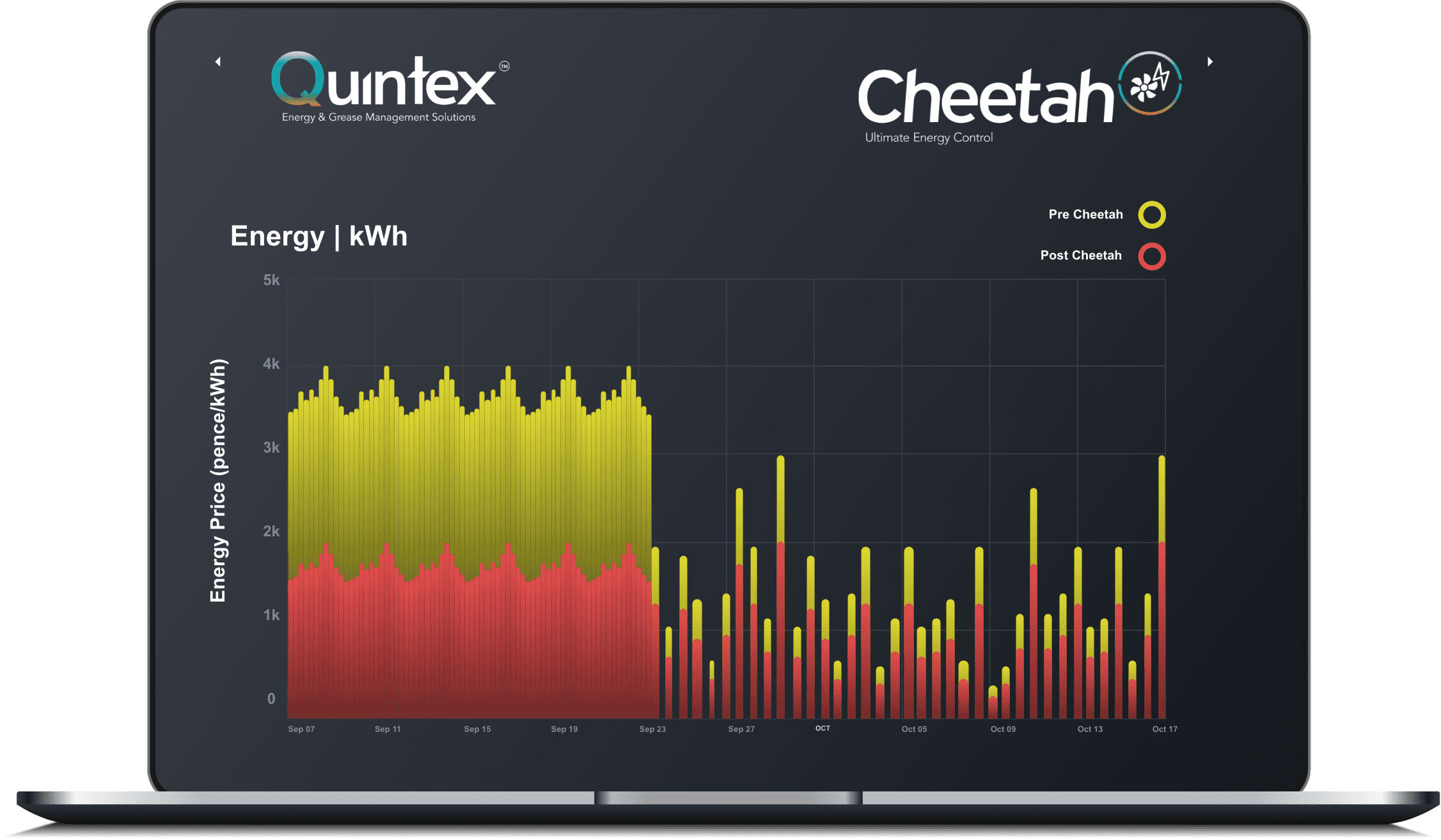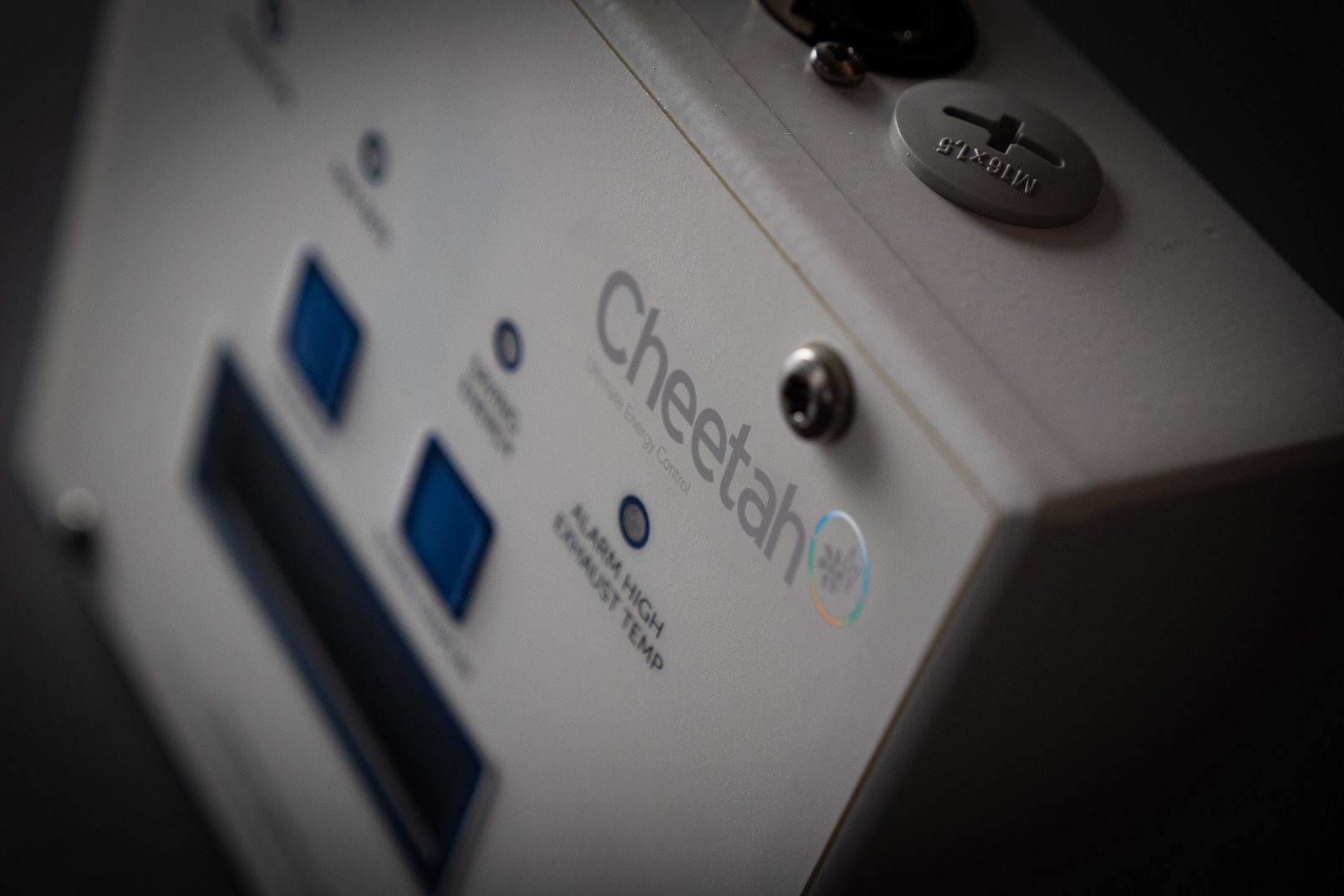Cheetah from Quintex is a Demand Control Kitchen Ventilation System (DCKV) for commercial kitchens and can reduce energy costs by up to 80%. The extraction of waste heat, odours, fumes and combustion products in commercial catering constitutes a major demand for energy. This energy demand is increased further with large quantities of conditioned air being lost to the atmosphere and replaced unnecessarily by inefficient ventilation systems.
Our demand controlled kitchen (DCV) extraction system is equally at home as either a retrofit or new build solution and works by controlling ventilation fan speeds such that extract rates are matched with cooking demands, hence optimising energy use.
The patented Cheetah system works on the principle of the ‘Affinity Laws for Centrifugal Loads’, the result of which is that a fan running at 40% of its normal operating speed, will only consume 6% of the energy required to run the fan at 100% of its operating capacity.
Variable speed drives are mandatory for the control of larger extract fans (Building Regulations Parts F & L). In commercial kitchens Cheetah controls these drives effectively and efficiently to create a variable air volume (VAV) system, safely minimise energy usage.

Cheetah saves energy by controlling the extract and air supply fans in line with demand. Energy savings of up to 80% are typically achieved with a demand controlled kitchen ventilation system.
The Cheetah kitchen ventilation system consists of a number of intelligent modules which are interconnected by a data communications network. A typical configuration is shown above.
The standard modules are:
• Display processor with system power supply and override facility
• Sensor processor
• Data logger with GPRS remote access system
• Temperature sensors (located in ducting)
• Optic sensors detecting smoke and steam (located in extract hood)
• Air flow meters in ducts (optional)
• Carbon dioxide sensors (optional)
With Cheetah operating in normal mode, the system’s sensors control the fans. The fans are set to a minimum speed by default but demand based extraction automatically increase in the event of smoke, high temperatures in ducts, low air flow in ducts and high levels of carbon dioxide, in the kitchen.

The Cheetah kitchen extraction system has helped businesses across a number of industries to reduce their carbon footprint and to save money. Read their stories in our case studies;

Cheetah saves energy by controlling the extract and air supply fans via it’s VAV systems. Typically, fan speeds are reduced to 40% of their normal operating speed when activity levels in the kitchen are low. At this speed the energy consumption is only 6% of that with the fans running at 100% of their operating capacity. Significant further energy is saved by the resulting fall in demand for conditioned air supply.
Noise in a commercial kitchen is greatly reduced from the use of Cheetah, along with better controlled working temperatures. Carbon dioxide sensors, if fitted, will also improve the working environment by ramping up the extract fans when excess carbon dioxide is detected, hence bringing the level back to a pre-determined range.
Remote access means we can monitor key system KPI’s such as fan speeds, temperature and air flows. Faults can be quickly identified and often fixed remotely, maintenance needs can be identified and performance optimised, all without attending site.
Cheetah’s energy monitoring unit can meter energy usage in up to eight locations in a restaurant or kitchen. The data is downloaded remotely and presented to the customer. This verifies the savings from Cheetah and identifies where further optimisation could enhance performance.
Air flow meters in the extract ducts enable the condition of the extract system to be monitored remotely, giving early warning of preventative maintenance need.
The temperature in the extract ducts is measured continuously and if high temperatures are detected, action is taken to alert the operators of a possible fire condition.
Please fill in your details below and one of our representatives will be in touch.